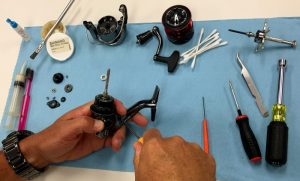Birdwatching for Conservation sets the stage for this enthralling narrative, offering readers a glimpse into a story that is rich in detail and brimming with originality from the outset. In this exploration, we delve into the world of birdwatching as a vital tool for preserving our environment and protecting biodiversity.
Introduction to Birdwatching for Conservation

Birdwatching for conservation is the practice of observing and studying birds in their natural habitats with the primary goal of protecting and preserving these avian species and their ecosystems.
Through the activity of birdwatching, individuals and organizations can gather valuable data on bird populations, behavior, and habitats, which can then be used to inform conservation efforts and policy-making decisions.
The Importance of Birdwatching in Conservation Efforts
- Birdwatching serves as a crucial tool for monitoring bird populations and detecting changes in their numbers over time.
- By identifying and documenting bird species, birdwatchers contribute to the overall knowledge of avian biodiversity and help in identifying species that may be at risk of extinction.
- Through birdwatching activities, conservationists can raise awareness about the importance of protecting natural habitats and ecosystems that are vital for bird survival.
How Birdwatching Contributes to Environmental Protection
- By promoting ecotourism, birdwatching can generate economic incentives for local communities to preserve natural habitats and wildlife.
- Birdwatchers can also play a role in advocating for the establishment of protected areas and conservation measures that benefit not only birds but also other wildlife species.
- The data collected through birdwatching activities can be used by scientists and researchers to assess the health of ecosystems and monitor the impact of environmental changes on bird populations.
Benefits of Birdwatching for Conservation
Birdwatching plays a crucial role in conservation efforts by providing various benefits to local ecosystems and biodiversity. Through the simple act of observing and recording bird species, birdwatchers contribute significantly to environmental preservation.
Positive Impact on Local Ecosystems
- Birdwatching helps in monitoring the health of local ecosystems by tracking population trends and identifying potential threats to bird species.
- By documenting the presence of different bird species in an area, birdwatchers can help conservationists understand the biodiversity and ecological balance of the region.
- Through their observations, birdwatchers can also identify important habitats that need protection or restoration to support bird populations.
Preserving Biodiversity
- By promoting the preservation of habitats for birds, birdwatching indirectly benefits other wildlife species that share the same ecosystems.
- Conserving bird populations helps maintain the balance of predator-prey relationships and contributes to the overall health of ecosystems.
- Through citizen science initiatives, birdwatchers contribute valuable data that can inform conservation strategies and help protect threatened bird species.
Raising Awareness About Environmental Issues
- Birdwatching fosters a sense of connection to nature and encourages people to appreciate the beauty and importance of birds in the ecosystem.
- As birdwatchers explore different habitats, they become more aware of the environmental challenges facing birds, such as habitat loss, climate change, and pollution.
- Engaging in birdwatching activities can inspire individuals to take action to protect the environment and support conservation initiatives in their communities.
Techniques and Tools for Birdwatching
Birdwatching for conservation requires specific techniques and tools to effectively observe and identify birds in the wild. Here are some essential methods and equipment for successful birdwatching activities.
Techniques for Birdwatching
- Patience is key: Birds can be elusive, so taking your time and observing quietly is essential.
- Learn bird calls and songs: Familiarizing yourself with different bird calls can help you locate and identify species without actually seeing them.
- Use binoculars: A good pair of binoculars is crucial for getting a closer look at birds from a safe distance.
- Practice fieldcraft: Understanding bird behavior and habitat preferences can help you anticipate where to find them.
Tools for Birdwatching
- Binoculars: Invest in a high-quality pair of binoculars with good magnification and clarity for optimal birdwatching experience.
- Field guide: Carry a field guide specific to the region you are birdwatching in to help with bird identification.
- Notebook and pen: Keep track of the birds you observe, their behaviors, and any other relevant information for future reference.
- Camera: Capture photos of the birds you spot to document your sightings and share with others for conservation purposes.
Birdwatching Hotspots for Conservation

Exploring popular birdwatching destinations known for their conservation efforts and the unique bird species found in these hotspots.
Costa Rica
Costa Rica is a renowned birdwatching destination with over 900 bird species, including the resplendent quetzal and scarlet macaw. The country’s extensive network of national parks and protected areas contribute to the conservation of these diverse bird populations.
Galapagos Islands
The Galapagos Islands are famous for their unique bird species such as the blue-footed booby and Galapagos penguin. Conservation efforts on the islands focus on protecting the fragile ecosystems that these birds rely on for survival.
Kruger National Park, South Africa
Kruger National Park is home to a wide variety of bird species, including the iconic African fish eagle and lilac-breasted roller. The park’s conservation initiatives aim to preserve the habitats of these birds amidst threats such as habitat loss and poaching.
Citizen Science and Birdwatching
Birdwatching is not just a hobby; it can also be a valuable tool for scientific research and conservation efforts. Citizen science, which involves volunteers collecting data for scientific projects, plays a crucial role in birdwatching and conservation.Citizen scientists, including birdwatchers, contribute valuable data to researchers by reporting bird sightings, behavior observations, and migration patterns. This data helps scientists track changes in bird populations, study their habitats, and monitor the impact of environmental changes on bird species.
Examples of Successful Citizen Science Projects
- The Great Backyard Bird Count: This annual event enlists birdwatchers worldwide to count birds in their local areas and report their findings. The data collected helps scientists track bird populations and migration patterns.
- eBird: A popular online platform where birdwatchers can submit their bird sightings and create checklists of species they have observed. The data is used by researchers to study bird distribution and abundance.
- NestWatch: Citizen scientists monitor bird nests, record nesting attempts, and track breeding success. This data helps researchers understand breeding biology and population trends of various bird species.
Challenges and Threats to Birdwatching Conservation
Birdwatching for conservation faces various challenges that can impact the efforts to protect bird populations and their habitats. Additionally, there are threats that directly affect bird species and their survival. By understanding these challenges and threats, birdwatchers can work towards finding solutions and strategies to overcome them.
Loss of Habitat
Loss of habitat is one of the primary challenges faced by birdwatchers in conservation initiatives. Due to deforestation, urbanization, and agricultural expansion, many bird species are losing their natural habitats. This loss directly impacts their ability to find food, shelter, and breeding grounds. Birdwatchers can address this challenge by advocating for the preservation of critical habitats, participating in reforestation efforts, and supporting conservation organizations working to protect natural areas.
Climate Change
Climate change poses a significant threat to bird populations around the world. Rising temperatures, extreme weather events, and changes in precipitation patterns can disrupt migration routes, alter breeding seasons, and affect food availability for birds. Birdwatchers can contribute to addressing this threat by monitoring bird populations, recording changes in behavior and distribution patterns, and supporting initiatives that promote sustainable practices to reduce greenhouse gas emissions.
Illegal Wildlife Trade
Illegal wildlife trade is a major threat to many bird species, especially those prized for their colorful feathers or unique traits. Poaching, trafficking, and the exploitation of birds for the pet trade can lead to population declines and even extinction of certain species. Birdwatchers can help combat this threat by reporting illegal activities, raising awareness about the consequences of wildlife trade, and supporting efforts to enforce wildlife protection laws.
Invasive Species
The introduction of invasive species poses a threat to native bird populations by competing for resources, preying on eggs and nestlings, and altering ecosystems. Invasive species can disrupt the balance of natural habitats and threaten the survival of native birds. Birdwatchers can play a role in addressing this challenge by monitoring and reporting sightings of invasive species, participating in removal and control efforts, and promoting the importance of preserving native biodiversity.
Pollution
Pollution, including plastic waste, chemical contaminants, and light pollution, can have detrimental effects on bird populations and their habitats. Birds can ingest toxic materials, suffer from habitat degradation, and experience disruptions in their natural behaviors due to pollution. Birdwatchers can help mitigate this threat by advocating for sustainable waste management practices, participating in clean-up initiatives, and raising awareness about the impacts of pollution on bird life.
Impact of Climate Change on Birdwatching
Climate change is having a significant impact on birdwatching, affecting bird migration patterns, habitats, and populations. Birdwatchers need to be aware of these changes and adapt their practices to help protect bird species.
Effects of Climate Change on Bird Migration Patterns
Climate change is altering the timing and routes of bird migration, leading to disruptions in traditional patterns. Warmer temperatures are causing birds to migrate earlier or later than usual, impacting the availability of food and nesting sites along their journey.
Impact of Climate Change on Bird Habitats and Populations
Climate change is causing shifts in bird habitats as temperatures rise and weather patterns become more unpredictable. This is leading to changes in the distribution of bird species and the availability of suitable habitats for nesting and feeding. Some bird populations are declining due to habitat loss and changes in food sources caused by climate change.
Strategies for Birdwatchers to Adapt to the Changing Environment
- Stay informed about climate change impacts on bird species and habitats.
- Support conservation efforts to protect bird habitats and reduce carbon emissions.
- Participate in citizen science projects that monitor bird populations and behaviors in response to climate change.
- Adjust birdwatching schedules and locations based on changing migration patterns and habitat availability.
- Educate others about the importance of addressing climate change to protect bird species for future generations.
Community Engagement and Outreach in Birdwatching Conservation
Birdwatching conservation projects are not only about protecting bird species but also about engaging and involving local communities in the efforts to preserve biodiversity. By fostering a sense of connection to nature and promoting environmental awareness, community engagement plays a crucial role in birdwatching conservation.
Examples of Community-Driven Birdwatching Conservation Projects
- Creating bird-friendly habitats in urban areas with the help of local residents.
- Organizing birdwatching events and workshops to educate communities about the importance of conservation.
- Establishing citizen science programs where community members can contribute data to bird monitoring initiatives.
Importance of Engaging Local Communities in Conservation Efforts
- Local communities are often the stewards of the land where birds reside, making their involvement crucial for effective conservation.
- Community engagement builds a sense of ownership and responsibility towards protecting bird species and their habitats.
- Empowering communities through education and participation leads to long-term sustainability in conservation efforts.
Promoting Birdwatching as a Tool for Community Involvement in Conservation
- Organize birdwatching excursions and guided tours to introduce local residents to the beauty of birds in their area.
- Collaborate with schools, community centers, and local organizations to integrate birdwatching activities into educational programs.
- Showcase success stories of community-led conservation projects to inspire others to get involved in birdwatching for conservation.
Final Review
As we conclude our journey through the realm of Birdwatching for Conservation, it becomes evident that this practice not only fosters a deep connection with nature but also plays a crucial role in safeguarding our planet’s precious ecosystems. Through the lens of birdwatching, we witness the power of community-driven efforts, citizen science, and environmental awareness in shaping a sustainable future for generations to come.
FAQ Insights
How can birdwatching contribute to conservation efforts?
Birdwatching helps raise awareness about environmental issues, supports scientific research through citizen science initiatives, and promotes the protection of bird habitats.
What tools are essential for birdwatching activities?
Binoculars, field guides, notebooks, and bird identification apps are commonly used tools for effective birdwatching.
What are some challenges faced in birdwatching conservation?
Common challenges include habitat loss, climate change impacts, and threats to bird populations due to human activities.




